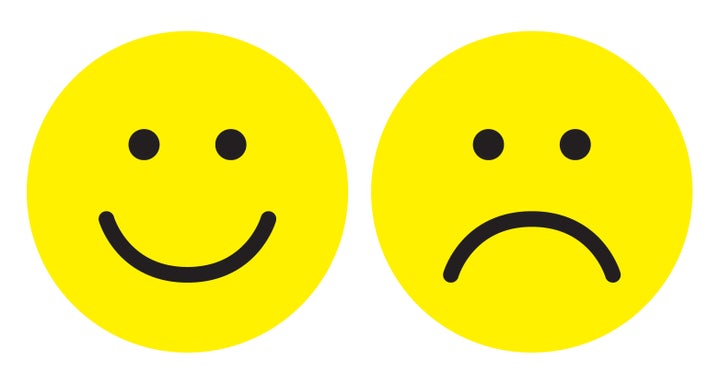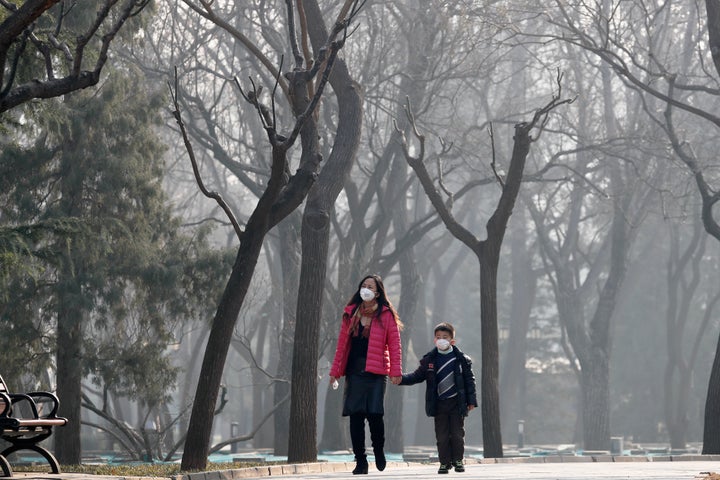
How happy do you feel today? How worthwhile do you think you are? How meaningful is your job? How hopeful do you feel? How angry? How does this compare with other people in your community, your city and your country?
These are big questions that a group of economists says governments should ask their citizens to better understand what makes a good life and to feed that into public policies. This is especially important, they say, at a time when we are seeing economic success accompanied by increasingly fractured societies.
The U.S. is one of the richest countries on earth. The economy has been barreling along at a fast clip and unemployment lies near record lows. But these economic good times aren’t translating into happier lives for a big swath of Americans.
A report released by the World Economic Forum on Wednesday found that, while the U.S. economy is the most competitive in the world, it has come at the expense of a “weakening social fabric.” Life expectancy is falling, driven in part by increases in “deaths of despair” ― people dying from suicide and substance abuse. This particularly affects white men without a college education who are falling between the cracks and dropping out of the workforce ― about 15 percent of men ages 25 to 54 are not working.
It’s not just an American issue, either. China’s economic growth has been phenomenal. Between 1990 and 2009, its gross domestic product increased by at least four times and life expectancy increased from 67 to 74 years, yet life satisfaction has tumbled. India too, another economic success story, has seen life satisfaction levels drop by 10 percent between 2006 and 2017.
Basically, as countries get richer, many of the people living in them seem to be getting unhappier.
It’s a phenomenon that Carol Graham, economics professor and senior fellow at the Brookings Institution, calls the “progress paradox,” where unprecedented economic growth and improvements in areas like health and literacy coexist with the bad stuff: climate change, pockets of persistent poverty, increased income inequality and unhappiness.

In an article published on Thursday in the journal Science, Graham, along with co-authors Kate Laffan of the London School of Economics and Sergio Pinto of the University of Maryland, say to overcome this paradox it’s vital to measure people’s happiness and well-being.
“We need to rethink how we think about success in society more generally, so it’s not just about people’s economic activity,” Laffan says, “but things like social connectedness that really matter about how people feel about their lives, that don’t show up in GDP or any other economic measure.”
This idea for including well-being and happiness in economic evaluations has been bubbling away for a few decades and it’s been steadily gaining traction.
“When I started working on happiness with a very small group of other economists and some psychologists in the early 2000s, people thought we were nuts,” Graham says. “I mean really! ‘You’re working on what?! No one’s going to take you seriously.’”
But the team got bigger, at one point including Daniel Kahneman, the first psychologist to win the Nobel Prize in economics. Then the financial crisis happened, creating and exposing social fault lines. People started to see that the metrics worked, revealing consistent patterns in countries across the world, says Graham.
“We got much more sophisticated about measuring not just open-ended happiness but also life satisfaction,” she says.
She makes clear that she’s not advocating for replacing income-based measurements or the GDP, just that these leave out a big chunk of the story.
“There’s something else going on that the income-based metrics aren’t telling us,” she adds.
Some places are already trying to slot happiness factors into policymaking. Bhutan is the most famous example. The kingdom of nearly 800,000 people, nestled in the Eastern Himalayas, created a Gross National Happiness Index in 1998. Every five years, a survey is taken of households across the country to track traditional indicators like living standards and health, along with nontraditional indicators like psychological well-being, time use, ecological diversity and connection to the community.
The approach has been picked over by nongovernmental organizations, think tanks and national governments for ideas about how to implement similar projects elsewhere. Dorji Penjore, head of the research division of the Centre for Bhutan & Gross National Happiness Studies, told NPR that, following the 2008 financial crisis, “People started to question the viability of Western liberal capitalism, the corporate world, and we were bombarded [with questions].”

Other countries are now adopting these ideas. The U.K. has measured national happiness since 2011 by surveying people 16 and older on life satisfaction, anxiety and how worthwhile they feel. And Costa Rica, which consistently ranks as one of the happiest places to live, is one of several countries, including Scotland and Slovenia, that joined together last October to commit to championing a well-being economy.
But it’s by zooming in to the local level that you can really see how measuring well-being and using the findings to inform policy can affect people’s quality of life, says John Helliwell, a University of British Columbia economist and editor of the United Nations World Happiness Report.
A good example, he says, is a 4-year-old scheme in Canada, which sees sixth-graders attend school in a Saskatoon retirement home, which houses 263 high-needs residents. The aim is to break down intergenerational barriers and tackle loneliness and isolation. One of the residents, speaking to CBC, said of the project: “If we didn’t see the kids, we would just be a bunch of old people in this building, and that is stark and it’s ugly. Without the kids, I just feel that a part of me dies.”
This kind of project is being replicated in different ways around the world. Young music students live with seniors in a retirement home in Cleveland, getting free housing in exchange for performing for the residents. And in Helsinki, Finland, as part of a city-funded initiative aiming to tackle youth homelessness and social isolation among the elderly, students live cheaply in a retirement home and spend time socializing with residents.
These local initiatives, using measures to inform how to help deprived communities in ways that aren’t simply giving them more income or jobs but are much more about community, make a huge difference in the quality of people’s lives, says Graham.
She mentions a project in Santa Monica, California, which introduced a Wellbeing Index in 2013. The city asked art students to come up with campaigns to tackle social isolation ― a problem identified in city-wide well-being surveys. In one, students visited a farmers market and asked random people to pose with other strangers for “family portraits,” specifically choosing people of different ages and races.
“By the end of it, half of them become friends,” says Graham, “and it’s a silly little thing but it shows how breaking down barriers can make a big difference when people are isolated, lonely and depressed.”
There are challenges to using well-being metrics. Happiness and well-being can be slippery things for us to define. Women in very deprived circumstances, for example, will sometimes say they are happier than they are because they have low expectations or have learned to live with their circumstances, says Graham.
But, she says, there are ways of questioning to tease out these problems and she dismisses broad criticisms that well-being data is unreliable or subjective.
“There is an amazing consistency in the patterns in terms of the way people answer,” she says. “If it was that biased and weird, why would the same factors matter to people’s well-being scores across countries and over time?”
“I don’t think we have an obvious solution to a lot of this despair,” she adds, “so we need to look not just at the causes of despair but also look at the communities able to thrive in the face of adversity.”
For more content and to be part of the “This New World” community, follow our Facebook page.
HuffPost’s “This New World” series is funded by Partners for a New Economy and the Kendeda Fund. All content is editorially independent, with no influence or input from the foundations. If you have an idea or tip for the editorial series, send an email to thisnewworld@huffpost.com
